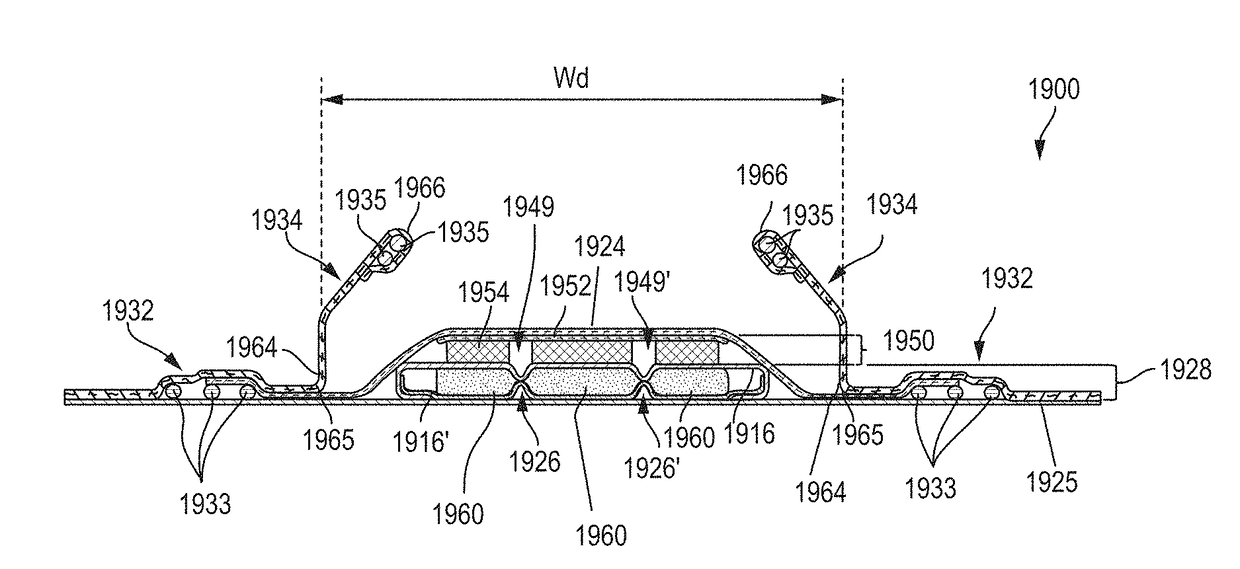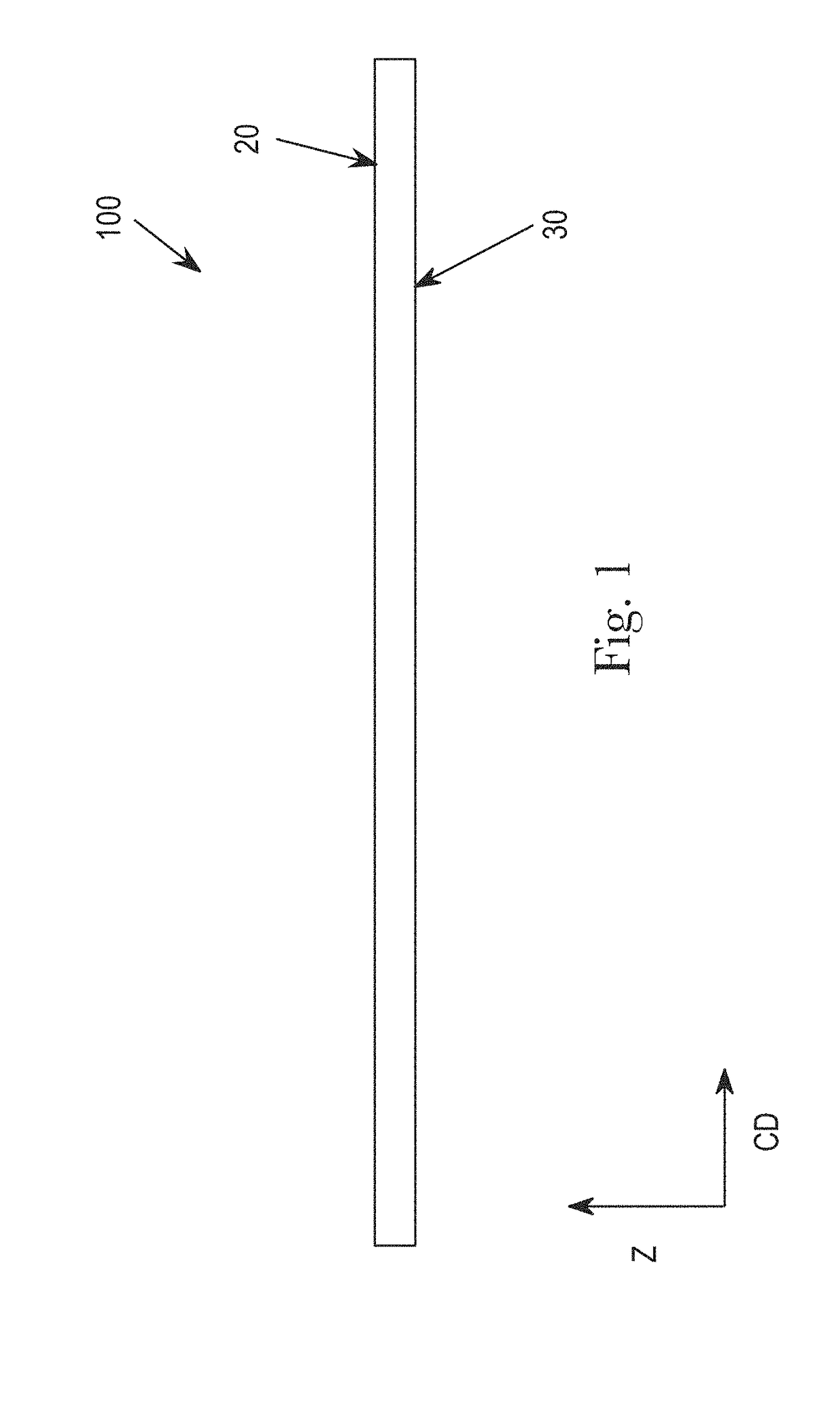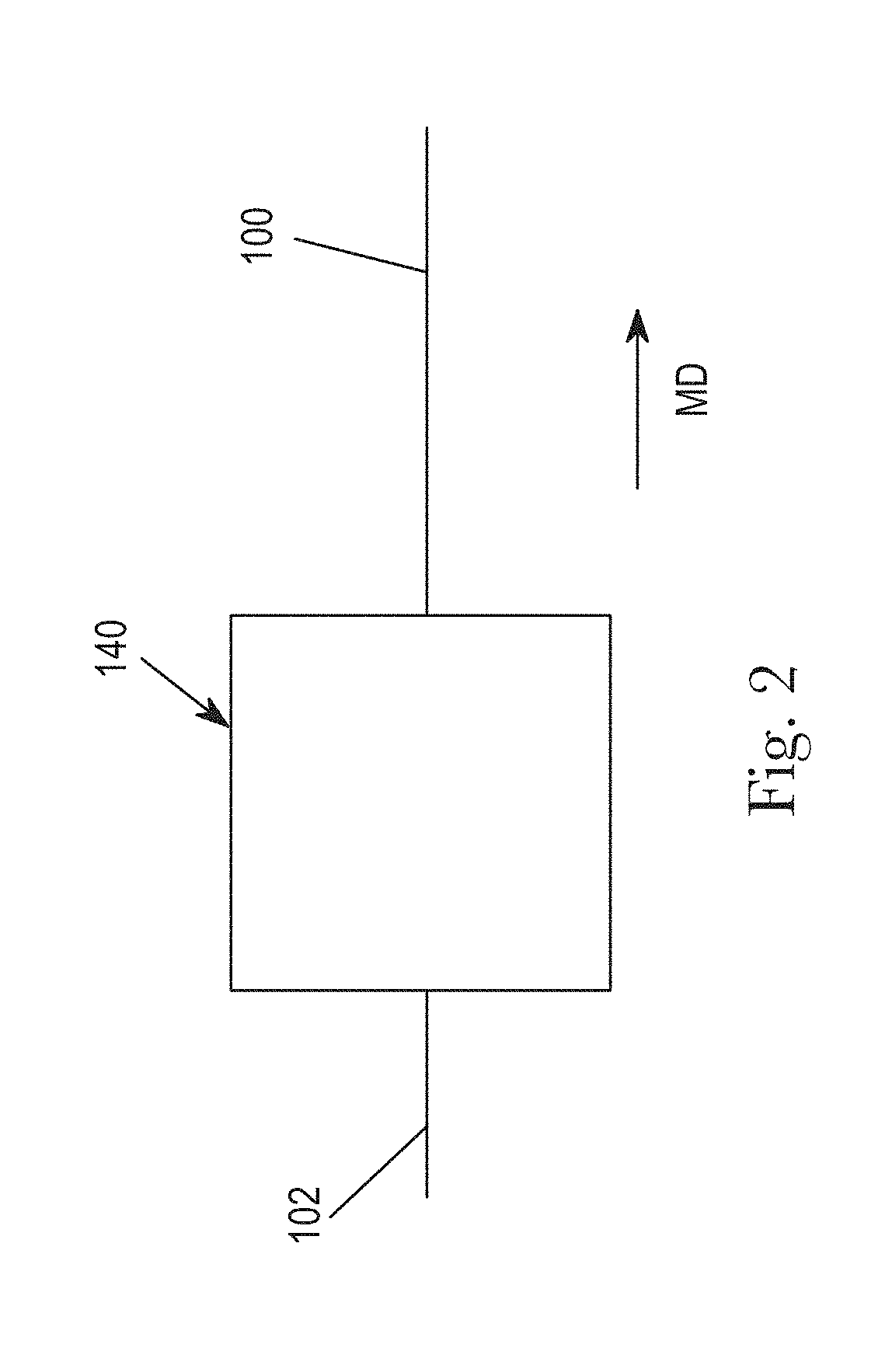Absorbent article with activatable material
a technology of absorbent articles and activated materials, applied in the direction of bandages, sanitary towels, group 5/15 element organic compounds, etc., can solve the problems that the nonwoven and/or film used as a topsheet for diapers the nonwoven and/or film suitable for adult incontinence products may not be suitable for feminine hygiene pads, etc., to encourage melt additive blooming, facilitate the acquisition of menses/urine insults, and facilitate the user
- Summary
- Abstract
- Description
- Claims
- Application Information
AI Technical Summary
Benefits of technology
Problems solved by technology
Method used
Image
Examples
examples
[0256]Exemplary material webs in accordance with the present disclosure were produced. The material webs were dual layer constructions. The upper layer was 25 gsm polypropylene 1 / polypropylene 2 (“PP1 / PP2”) crimped fiber spun bond comprising a hydrophobic melt additive which was 16 percent by weight glycerol tristearate master batch (Techmer PPM15000) in both polypropylene components. The lower layer was 25 gsm PP1 / PP2 crimped fiber spun bond comprising 0.4 percent by weight topical surfactant Silastol PHP26. The two layers were overbonded together (see FIGS. 3A and 3B) in a center zone and then stretched (see FIGS. 3A and 3C) to create apertures in the center and tufts on the sides. The upper and lower layers were then fusion bonded to secondary topsheet, thereby forming a laminate. The images shown in FIGS. 28A-29B are of the unmodified fibers in the upper layer (wrinkled surface), fusion bond sites (showing fibrils) and melt lips around the apertures (also showing fibrils). The p...
examples 1-4
[0284]Spunbonded (S) single layer nonwoven fabrics were produced from 100-x wt % Ziegler-Natta polypropylene and X wt % of a hydrophobic melt additive (PPM17000 High Load Hydrophobic) and were thermally bonded. Each of the single S-layers had a weight of 20 g / m2. The contents of the hydrophobic additive in Examples 1-4 are summarized in Table 1.
TABLE 1ExampleX [wt %]102336410
[0285]Examples 1-4 were tested for Low Surface Tension Strike Through (LST-ST)—measured in seconds. The results are summarized in Table 2. Each sample was tested 15 times, the average is provided below in Table 2.
TABLE 2Example1234Average4.868.1511.2013.59Std. Dev0.681.811.533.81Min3.806.978.258.80Max6.2514.1314.1320.75
example 5-7
[0286]Three S single layer nonwovens were produced from 100% Ziegler-Natta polypropylene and were thermally bonded. Each of the single S-layers had a weight of 20 g / m2. After the web making process of the nonwovens they were thermally treated with an in-line Omega Drying oven at 90° C., 120° C. and 135° C., for Example 5, 6 and 7, respectively.
PUM
| Property | Measurement | Unit |
|---|---|---|
| contact angle | aaaaa | aaaaa |
| diameters | aaaaa | aaaaa |
| diameters | aaaaa | aaaaa |
Abstract
Description
Claims
Application Information
 Login to View More
Login to View More - R&D
- Intellectual Property
- Life Sciences
- Materials
- Tech Scout
- Unparalleled Data Quality
- Higher Quality Content
- 60% Fewer Hallucinations
Browse by: Latest US Patents, China's latest patents, Technical Efficacy Thesaurus, Application Domain, Technology Topic, Popular Technical Reports.
© 2025 PatSnap. All rights reserved.Legal|Privacy policy|Modern Slavery Act Transparency Statement|Sitemap|About US| Contact US: help@patsnap.com



